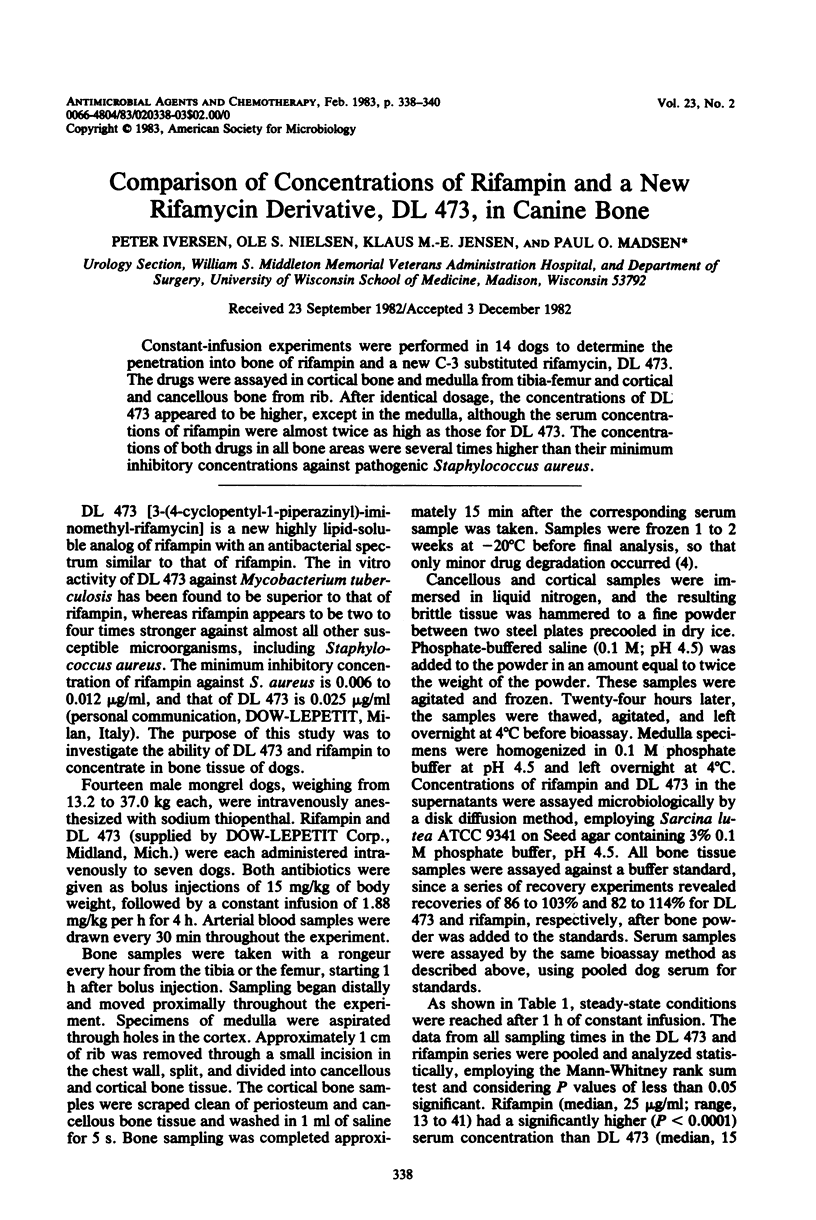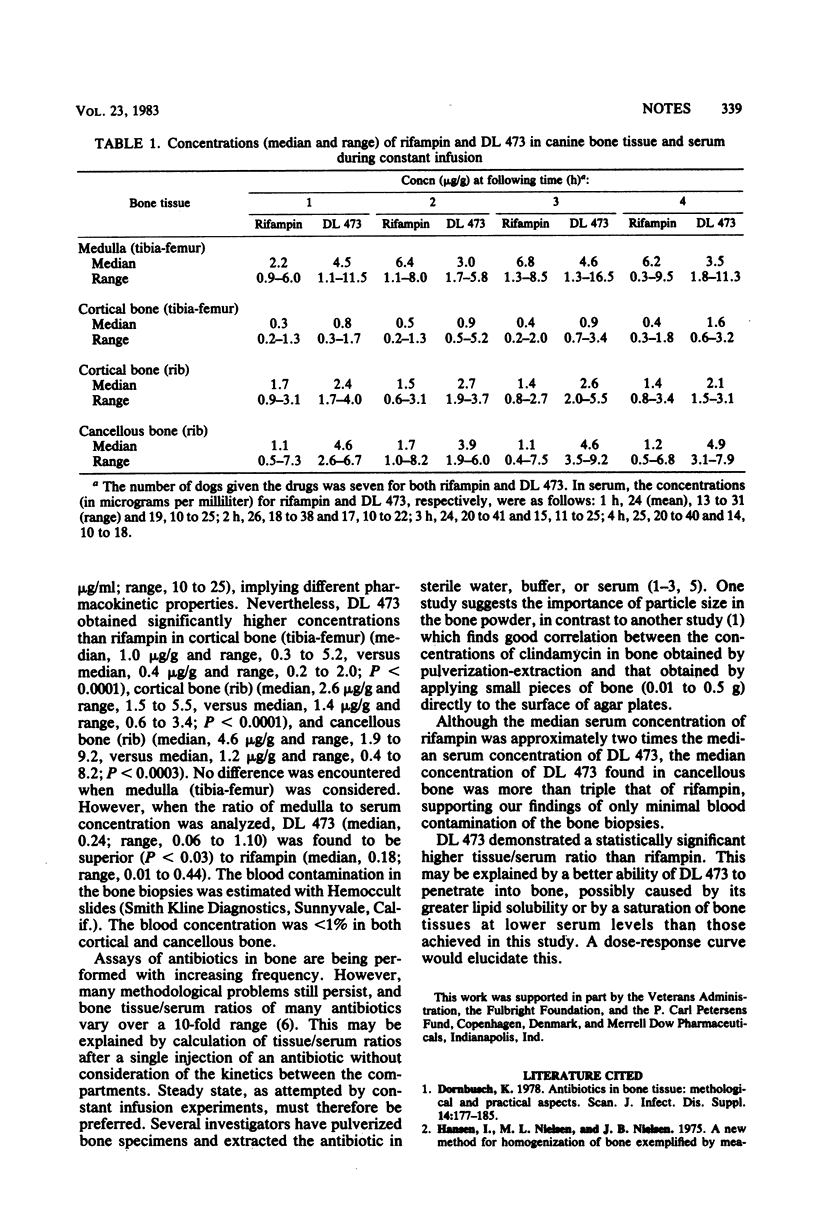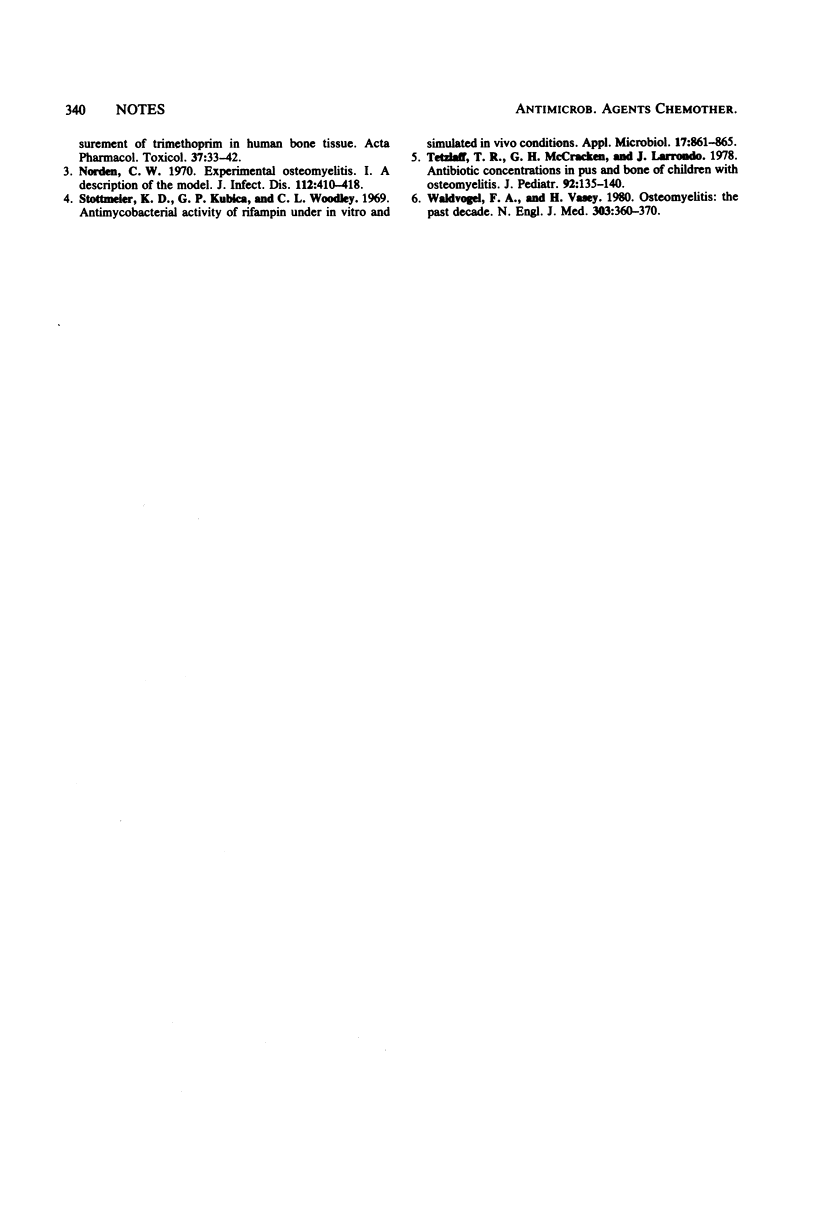Abstract
Constant-infusion experiments were performed in 14 dogs to determine the penetration into bone of rifampin and a new C-3 substituted rifamycin, DL 473. The drugs were assayed in cortical bone and medulla from tibia-femur and cortical and cancellous bone from rib. After identical dosage, the concentrations of DL 473 appeared to be higher, except in the medulla, although the serum concentrations of rifampin were almost twice as high as those for DL 473. The concentrations of both drugs in all bone areas were several times higher than their minimum inhibitory concentrations against pathogenic Staphylococcus aureus.
Full text
PDF


Selected References
These references are in PubMed. This may not be the complete list of references from this article.
- Norden C. W. Experimental osteomyelitis. I. A description of the model. J Infect Dis. 1970 Nov;122(5):410–418. doi: 10.1093/infdis/122.5.410. [DOI] [PubMed] [Google Scholar]
- Stottmeier K. D., Kubica G. P., Woodley C. L. Antimycobacterial activity of rifampin under in vitro and simulated in vivo conditions. Appl Microbiol. 1969 Jun;17(6):861–865. doi: 10.1128/am.17.6.861-865.1969. [DOI] [PMC free article] [PubMed] [Google Scholar]
- Tetzlaff T. R., Howard J. B., McCraken G. H., Calderon E., Larrondo J. Antibiotic concentrations in pus and bone of children with osteomyelitis. J Pediatr. 1978 Jan;92(1):135–140. doi: 10.1016/s0022-3476(78)80095-x. [DOI] [PubMed] [Google Scholar]
- Waldvogel F. A., Papageorgiou P. S. Osteomyelitis: the past decade. N Engl J Med. 1980 Aug 14;303(7):360–370. doi: 10.1056/NEJM198008143030703. [DOI] [PubMed] [Google Scholar]


